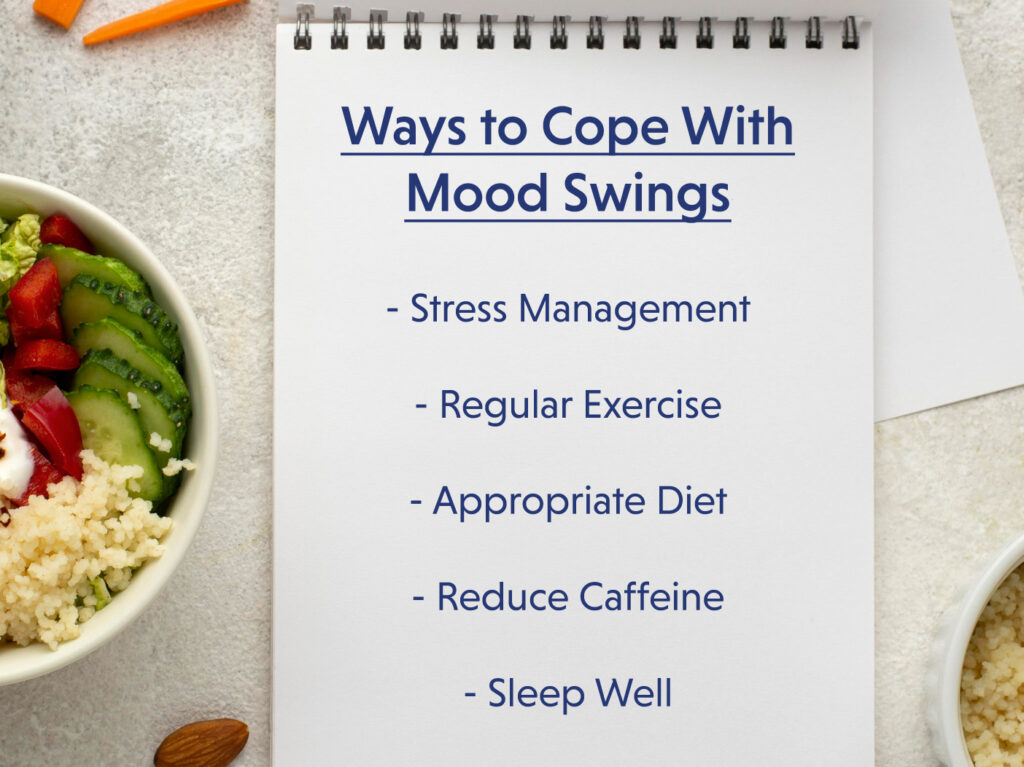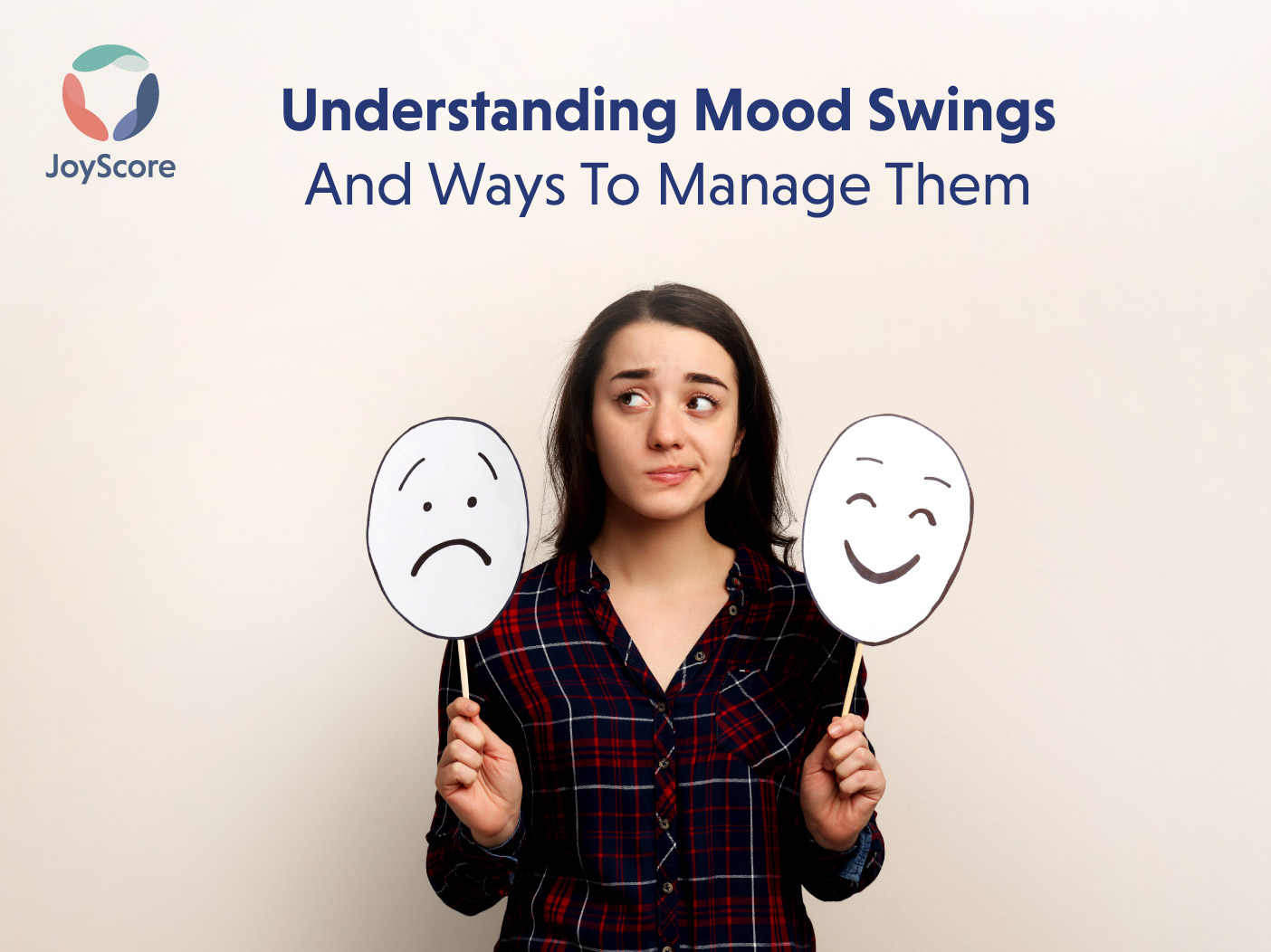Mood swings are sudden changes in a person’s emotional state as a result of some underlying cause or situation. These are common in both males and females and result from any change in the level of hormones in the brain. Some of the most common reasons why a mood swing happens is due to monthly periods, stressful situations, sleep deprivation or low blood sugar.
During a mood swing, an individual will experience a switch of emotions from feeling happy to feeling sad and frustrated. The bad mood will be all-consuming and interfere with their daily living. Furthermore, the bad mood will:
- Lead to feelings of sadness, anxiety and emptiness.
- Make you cranky and does not let you feel pleasure in most activities.
- Reduce your attention span, energy levels and functionality.
- Makes you doubt your worth and feel pity for yourself.
- Cause you blame others.
- Affect your sleep cycle and eating habits.
- Can stir up suicidal thoughts.
POSSIBLE CAUSES OF MOOD SWING
Here are some common situations and conditions that often lead one to have a shift in mood and thought process.
AGE GROUPS
- Adolescence
The physical and emotional changes a child suffers during this stage of life make mood swings very obvious. The evident reason behind this change is fluctuations and surges in hormonal levels of the brain. The rapid brain development during puberty results in emotional imbalance, which affects the way they interact with others.
- MENOPAUSE
Similar to adolescence, menopause is also the stage where hormonal changes occur. The woman will experience feelings of anxiety, stress, fatigue and even depression. All these symptoms are the result of lower levels of estrogen, resulting in a bad mood.
- PREGNANCY
Mood swings are very common during pregnancy and even after delivery. The biggest culprit in this will be a sudden surge in pregnancy hormones, i.e. progesterone and estrogen. Others will be:
- Fatigue and sleep deprivation during late pregnancy and child care.
- Physical changes such as growing belly, enlarged breast size and swollen feet.
- Morning sickness, which is mostly common during the first trimester.
- Stress about adjustments and financial budgeting you will have to manage after the baby comes.
- Anxiety about the pain of contractions women will bear during labor.
MENTAL AND PHYSICAL PROBLEMS
- STRESS
Stressful situations are a part of life as they may pop up at any time in life. Although the effect of stress may vary from person to person, the change in mood is a common factor. Stree will make the individual feel sad, angry and cranky.
- ADHD (ATTENTION DEFICIT HYPERACTIVITY)
Individuals suffering from ADHD are more likely to suffer from anxiety and depression if things go out of control. It may be anything from long lines of traffic to a refusal from an office project. These people are not able to control their impulses and so become frustrated easily, leading to unpredictable mood swings.
- HYPOGLYCEMIA
If you are feeling cranky and anxious after skipping on meals, it may be a warning sign that your blood sugar is low. So, grab a bar of chocolate or a glass of juice immediately. If this condition stays for long, the hormone “cortisol” will be released which is responsible for inducing stress.
- THYROID DISEASE
Both diseases, hyperthyroidism and hypothyroidism, can affect the mood of a person. However, the severity of thyroid disease will decide how severe the mood changes will be. The individual usually suffers with the below mood-related symptoms:
- Anxiety
- Nervousness
- Depression
- Irritability
- Unusual tiredness
- MIGRAINE
The change in mood is a well-known symptom of a migraine in about 60% of people. A person may feel sad and cry due to lower levels of serotonin receptors. The headaches experienced in migraines increase the risk of anxiety and depression in chronic cases. As per some studies, 4 out of 5 people with migraines will experience depression too.
SUBSTANCE ABUSE
- MEDICATION-RELATED MOOD SWINGS
When you increase the dose or stop taking medication, mood swings are monitored. The list of medications that can cause this problem are:
- Steroid medications
- Beta-blockers
- Antihistamines
- ACE inhibitors
- Oral contraceptive pills
- Decongestants
- Blood pressure medications
- antidepressants
- DRUGS AND CAFFEINE
The use and abuse of alcohol and other drugs can render an individual’s brain chemistry and cause mood swings. Alcohol is one of the most common substances consumed, making people dependent after overuse. Similarly, other drugs like marijuana, nicotine, caffeine and certain pain medicines can make a person feel sad and low.
TREATMENT FOR MOOD SWINGS

If encountering mood swings becomes difficult and is affecting normal living, the individual has to learn coping skills. In this, the first step is to identify the factors responsible for mood swings, be it, stress, poor sleep or skipping meals. To cope well, the individual must choose an appropriate way, for instance:
- STRESS MANAGEMENT
Even though stress behaves as the reason for uncontrollable mood swings, persisting stress can also worsen the symptoms. Meditation, yoga and deep breathing are great ways to manage stress. All these are to be practiced by oneself in a calm environment.
- EXERCISE REGULARLY
Mood swings can get better only by daily movement or little warm-up exercises. Doing a little workout at home, going to the gym, or a 30-minute walk in the park will stimulate the release of feel-good hormones and endorphins, which can boost the mood. Some helpful activities are:
- Running
- Lifting weights
- Gardening
- Washing a car
- Sports
- APPROPRIATE DIET PLAN
In today’s hectic and stressful life, eating smaller meals is better for us than three large meals. This is because too much rise in sugar level after a large meal can contribute to emotional changes but smaller meals keep the sugar levels stable throughout. Hence, the mood of such a person will also remain stable.
- REDUCE CAFFEINE AND SUBSTANCE ABUSE
As we have mentioned before, the overuse or sudden cessation of drugs or stimulants can alter the natural state of a person’s mind. Therefore, in order to maintain mood stability, one needs to cut back on stimulants like coffee, chocolates and drugs or depressants like alcohol and nicotine. Here are some effective ways to quit these harmful habits on your own.
- Improve your sleep by adding an extra hour to each night.
- Be honest about your drinking habits.
- Set a goal of a realistic time frame to quit caffeine or alcohol.
- Take out time for a morning workout every day.
- Remove oneself from the places or groups that act as triggers.
- SLEEP WELL
Sleep is an essential process of human life as it provides rest and breaks to our physical and mental well-being. So, adopt some healthy habits to improve your sleep cycle. For this:
- Stick to a sleep schedule
- Set a restful environment in the bedroom
- Reduce your screen time before going to bed.
CONCLUSION
Although mood swings seem to be a normal thing, a mood cycle higher or lower than average is not normal and can be the result of something else, more serious, going on in life. Return to this blog to remember what healthy techniques you can do to help combat mood swings.
Download the JOYSCORE app to learn improved and healthy ways of living.
Download on the Appstore
Get it on Google Play



